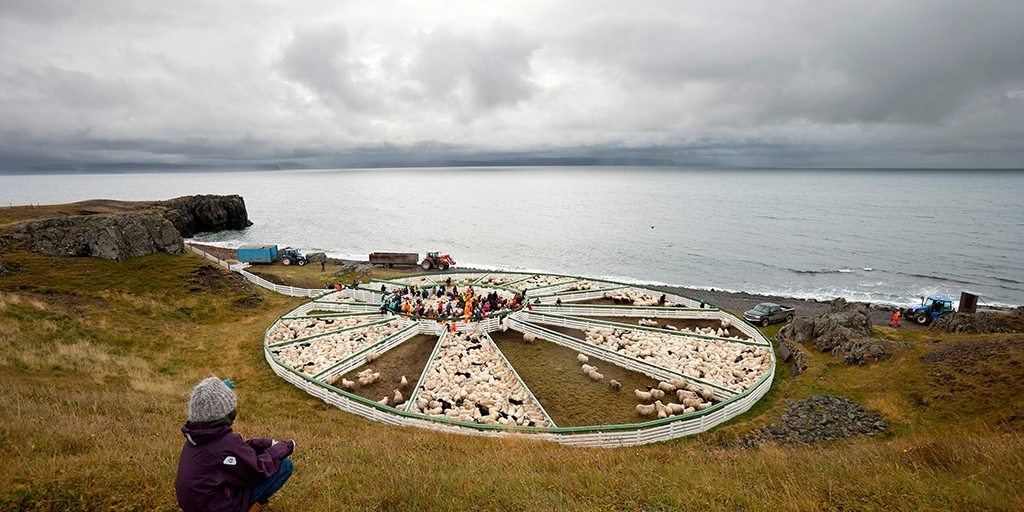Sheep

Sheep make up most of Iceland’s livestock. Sheep came with us to the country and have lived alongside us ever since. Many fantastical descriptions exist of what people went through for their precious sheep. Many of our ancestors put their own lives in danger saving runaway sheep when bad weather was looming.
Sheep are kept indoors during the winter, but as spring arrives with better weather the sheep are let out with their newborn lambs. The mothers feed on the fresh grass surrounding the farms until it is safe to let them out to graze the mountain pastures. In the summertime, the sheep roam free with their lambs, feeding on flowers and grasses.
Fall is the season of harvest and slaughter. This was a busy time in the old farmer’s society. Ingenuity was needed to make use of every single part of the animals including the heads, legs, and innards. Sausages and patés were made from charred sheep heads, which were sometimes jellied as well. Before freezing and refrigeration came around, meat was mostly smoked, salted or pickled. Even the testicles of the rams were pickled, and they are still a popular dish at the Þorrablót feasts. Many of these old traditions are still alive and well today.
It is common for families and groups to get together and make traditional “slátur,” both in the city and out in the country. Slátur refers to blood sausage made from sheep blood and liver sausage made from minced sheep liver. These ingredients are mixed with grains and fat and stuffed into prepared sheep stomachs. Blood and liver sausages are available at most supermarkets all year long. Kids especially like fried blood sausage with potatoes, mashed rutabaga and apples. The old way of preserving the sausages was by pickling them, which also boosts their nutritional value.
Some Icelanders are able to taste the difference between varieties of lamb. The people of Skaftafell consider their lamb to be the best while in Jökuldalur, the lamb from the mountains is preferable to the lamb that grazes by the coast in Breiðafjörður.
Smoked lamb and Christmas go hand in hand and most Icelanders eat smoked lamb at least once during the holidays. According to sources, the first hay-festivals or “töðugjöld” were held around 1800. When haying was finished, farmers celebrated and workers were rewarded with fresh lamb.
For more information, see Icelandic Lamb.